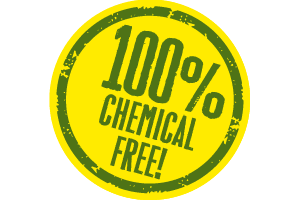If you have ever eaten fruit, vegetables, or grains, your body has digested a type of nutrient known has fiber. But what exactly is that? First, it should be made known that fiber is arguably the least understood nutrient that goes into your body, and it is only in recent years that research by the Institute of Medicine has been completed in trying to understand what it does.
According to a Harvard School of Public Health study, fiber is a type of carbohydrate that your body can’t digest, but is associated with lowered risk of certain conditions such as type 2 diabetes, heart disease, diverticular disease, and constipation. Unlike most carbohydrates, fiber does not break down into sugar molecules, but instead goes through the body and helps regulate the use of the sugars, therefore helping to control hunger and blood sugar.
Most importantly, fiber can be found naturally in foods, but can also be synthetically produced. This brings up the question of whether you should consume the fiber that is produced naturally or synthetically. While the answer is not clear cut, there are several reasons why natural fiber is the better option.
To begin with, natural fiber (also called dietary fiber) is found in plant-based foods such vegetables, nuts, whole grains, legumes, and seeds. As opposed to synthetic fiber (also called functional fiber), dietary fiber is so much more readily available for consumption. Functional fiber can only be found in supplements or is injected into certain foods to enhance fiber content. Being readily available in common foods means that dietary fiber has the advantage.
Dietary fiber being found naturally in common foods holds another advantage over functional fiber: consumers of those foods will also digest other nutrients needed for the body, such as important proteins or carbohydrates. Unless functional fiber is injected into these same foods as additives, consumption of functional fiber will not provide this benefit.
While both dietary and functional fiber both have certain benefits, functional fiber comes from isolated or extracted non-digestible carbohydrates. Looking at the Institute of Medicine research again, the fiber is “isolated or extracted using chemical, enzymatic, or aqueous steps.” A common example of a functional fiber created using these processes would be polydextrose, a fiber-containing molecule found in some cereals and synthesized from glucose and sorbitol, another carbohydrate. The only thing missing from these synthesized molecules is lignin, which is found in the dietary fibers. Lignin is indigestible so it helps fight constipation, and then is degraded by certain bacteria in the digestive tract. So while both kinds of fibers have similar benefits, functional fiber is lacking because it does not have the lignin that is beneficial as well.
These reasons show that dietary fiber is better your health, yet a major problem arises with the consumption of this fiber. Remember how fiber has a reputation for being hard to understand? This complexity leads to the fact that when fiber is reported on FDA food labels, functional fiber and dietary fiber are added together to get total fiber content. These labels do not differentiate between how much of each kind is in the food, and instead only gives the total amount.
This can be problematic because the FDA is allowing polydextrose and other functional fibers to be labeled as dietary fibers. There is a level of deception that goes on at this point, and the director of nutrition at the Center for Science in the Public Interest in Washington, D.C., Bonnie Liebman explains:
“Companies are putting fiber into foods like cookies and ice cream and making people think these are healthy foods, when in fact they should be eating fruits, vegetables, and whole grains. It’s dressing up junk food and health food. We have no idea if polydextrose has the same benefits as bran. It’s deceptive.”
Basically, in foods that should be free of functional fiber, and have only dietary fiber, may instead have some, and the consumer could think that the food is healthier than it actually is. Some advice, then: just stick with natural foods that are known to have dietary fiber. Stay away from any foods with fiber additives or supplements because you never know what you might get.
